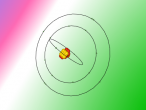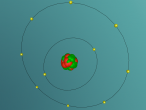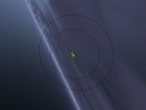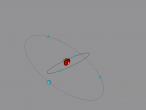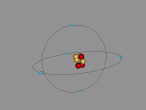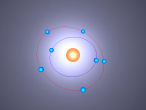Atom
Sulfur Atom
In this blog I will be discussing the composition, struture and characteristics of the atom sulfur (sulphur).
It is a common atom with many industrial uses, such as the manufacturing of black powder, matches and explosives. It is also used to create rubber, in dyes, and as an insecticide and fungicide, however its main use is in producing sulfuric acid, the top chemical used by the world's industry.

Carbon atom by William Du
Carbon is one of the most abundant atoms in the universe. It is able to form many compounds, such as diamond, graphene and graphite.
Neon Atom by Jade Upton
An atom is the smallest particle of a chemical element; so consequently, atoms are the building blocks of matter and the world around us. I have modelled an atom of the chemical element Neon (Ne) through the website VRMath 2.0 using the skills I learnt during the workshop at QUT last Tuesday. The element Neon has an atomic number of 10, and its atom consists of 10 protons, 10 electrons, and in most cases and as depicted in the model, 10 neutrons. My partner Lauren and I decided on modelling this atom because we were intrigued about its properties as we had very recently learned of its existence and its role in neon signs. For this assignment, I created a 3D model of 20Ne using Bohr’s atomic model (below).
LITHIUM 9D
Boron Atom
Boron Atom (By Melody Suen)



